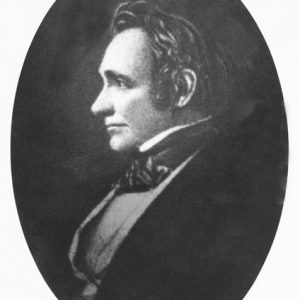calsfoundation@cals.org
Second Seminole War
In 1835, the United States was engaged in the second of a series of three wars known as the Seminole Wars, fought against a group of Native Americans and blacks in Florida. While these military operations were conducted far from the borders of Arkansas Territory, they did have an effect upon the territory. When the federal government requested that the territorial governor of Arkansas provide troops, Arkansas citizens became engaged, for the first time, in organized military actions to defend the United States.
By late 1835, it appeared that the first war with the Seminole of Florida was about to be concluded by treaty. When the well-known leader Osceola and other Seminole leaders repudiated this treaty, war broke out anew. Federal troops defending faraway posts on the western border of the United States were soon called back east. Once these troops were removed, the western border of Arkansas Territory was left unprotected from Indian—or even Mexican—incursions.
On May 4, 1836, Territorial Governor William S. Fulton informed Brigadier General George Hill of the Arkansas militia that he had received intelligence that the government of Mexico was attempting to incite the Indians on the western border to violence. Hill was instructed to muster his troops and prepare for any emergency. On June 28, Fulton received a request from General Edmund Gaines to raise a regiment, one half to be mounted, to replace federal troops that had been removed from the western border. Fulton issued a proclamation on July 19, 1836, for the enlistment of the requested regiment.
Within a few weeks, only six companies—from Conway, Hempstead, Pope, Pulaski, Saline, and Sevier counties—had been raised. Officers were selected, though the number of men mustered in was considerably smaller than what was necessary for a full regiment. Laban Howell, the captain of the Pope County force, was chosen as colonel. When it was determined that the number did not meet regimental strength, the companies were organized into a battalion. Howell stepped down and returned to his company. The elected lieutenant colonel, Absalom Fowler of Pulaski County, assumed command of the newly organized battalion.
By October, the battalion had arrived at Fort Towson on the border between Indian Territory (present-day Oklahoma) and the recently organized Republic of Texas. For the next several months, they performed scout duty in the area.
Disturbances between bickering factions of the Cherokee in northwestern Arkansas brought an additional call for troops. On September 5, 1836, Fulton issued a second proclamation. A second unit composed of men from Carroll, Crawford, Independence, Izard, Jackson, Johnson, Lawrence, Scott, Searcy, and Washington counties was mustered. This unit served independently in Benton and Washington counties, preserving the peace and protecting citizens.
With the apparent conclusion of the war in the spring of 1837, Arkansas congressional delegate Ambrose Sevier was able to secure the return of federal troops to Fort Towson. With the arrival of six companies of United States infantry and two companies of dragoons, the battalion under the command of Lt. Col. Fowler was recalled to Arkansas.
With the battalion’s return, Arkansas’s role in one of the United States’ most costly wars concluded. The Arkansas militia would not be called into federal service again until the war with Mexico in 1846.
For additional information:
Herndon, Dallas Tabor. Annals of Arkansas. Vol. 2. Hopkinsville, KY: Historical Record Association, 1947.
———. Centennial History of Arkansas. Vol. 1. Chicago: S. J. Clarke Publishing Company, 1922.
Mike Polston
CALS Encyclopedia of Arkansas
 Louisiana Purchase through Early Statehood, 1803 through 1860
Louisiana Purchase through Early Statehood, 1803 through 1860 William Fulton
William Fulton 



Comments
No comments on this entry yet.